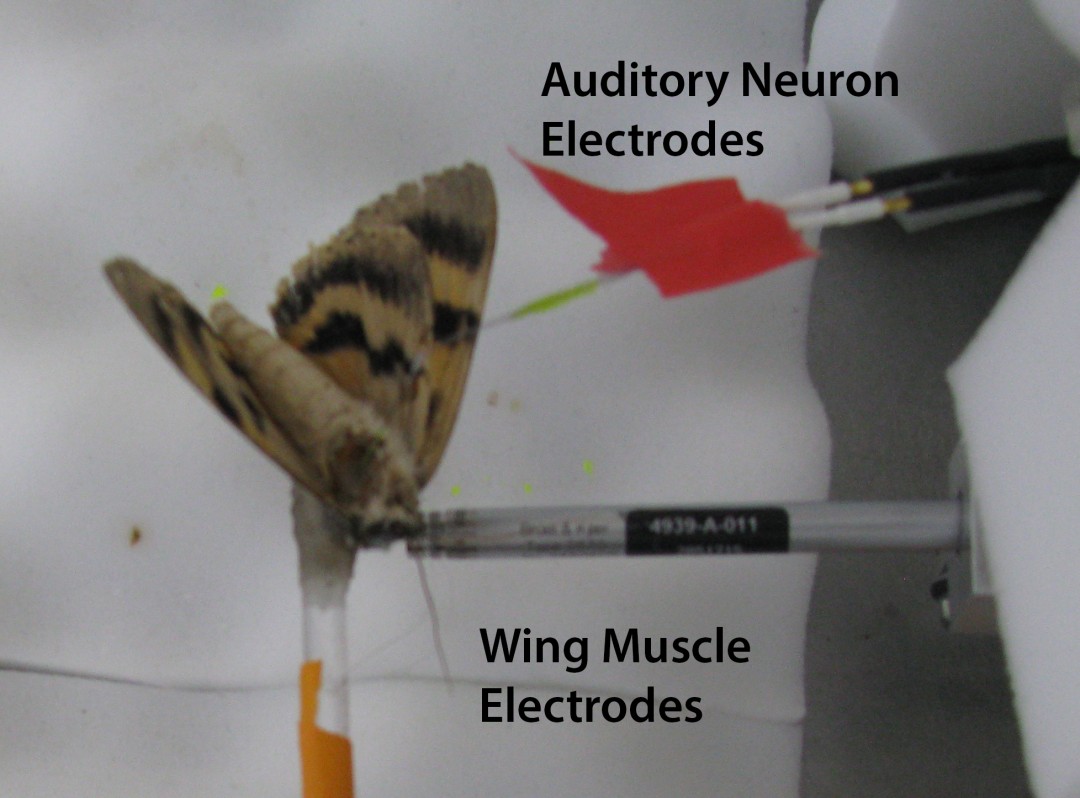Abstract:
Animals co-occur with multiple predators, making sensory systems that can encode information about diverse predators advantageous. Moths in the families Noctuidae and Erebidae have ears with two auditory receptor cells (A1 and A2) used to detect the echolocation calls of predatory bats. Bat communities contain species that vary in echolocation call duration, and the dynamic range of A1 is limited by the duration of sound, suggesting that A1 provides less information about bats with shorter echolocation calls. To test this hypothesis, we obtained intensity-response functions for both receptor cells across many moth species for sound pulse durations representing the range of echolocation call durations produced by bat species in northeastern North America. We found that the threshold and dynamic range of both cells varied with sound pulse duration. The number of A1 action potentials per sound pulse increases linearly with increasing amplitude for long duration pulses, saturating near A2 threshold. For short sound pulses, however, A1 saturates with only a few action potentials per pulse at amplitudes far lower than the A2 threshold for both single sound pulses and pulse sequences typical of searching or approaching bats. Neural adaptation was only evident in response to approaching bat sequences at high amplitudes, not search phase sequences. These results show that, for short echolocation calls, a large range of sound levels cannot be coded by moth auditory receptor activity, resulting in no information about the distance of a bat, although differences in activity between ears might provide information about direction.

